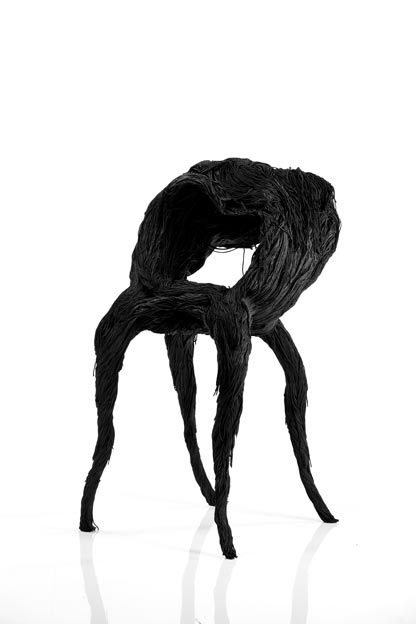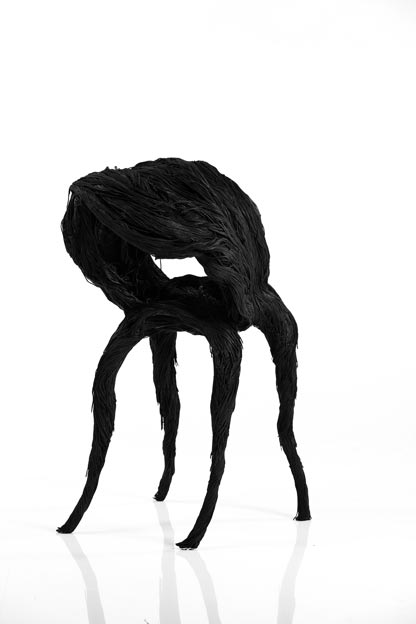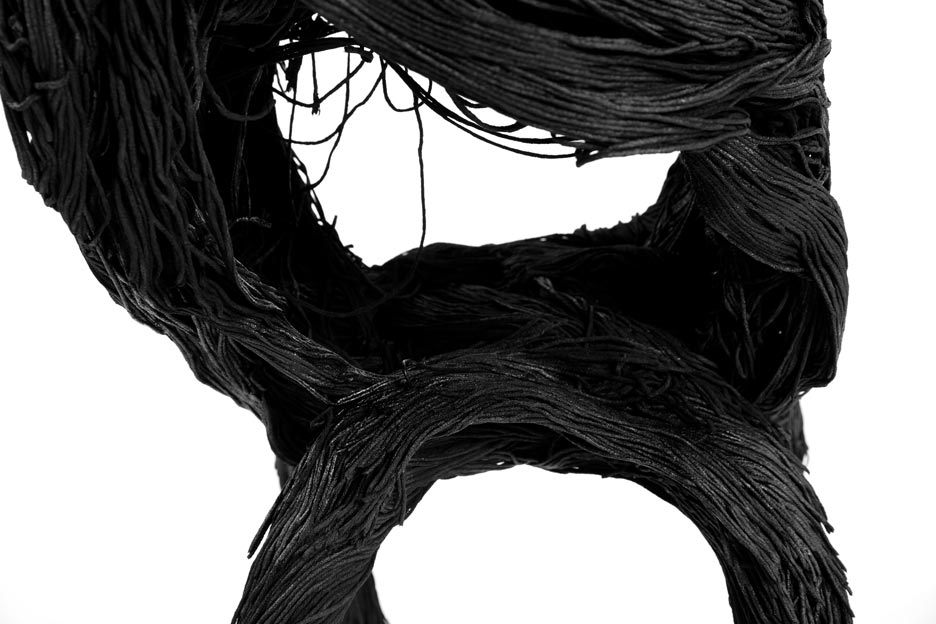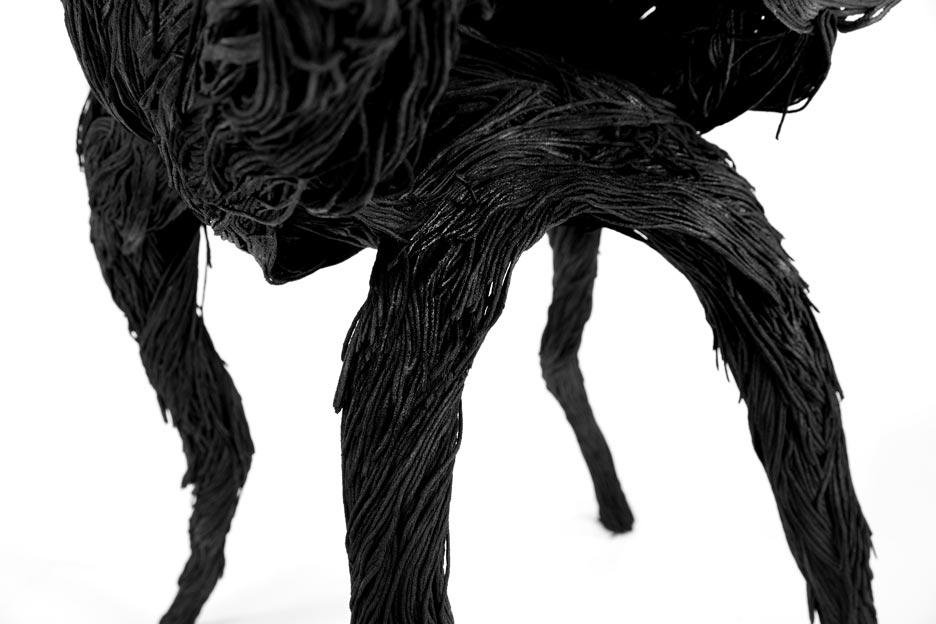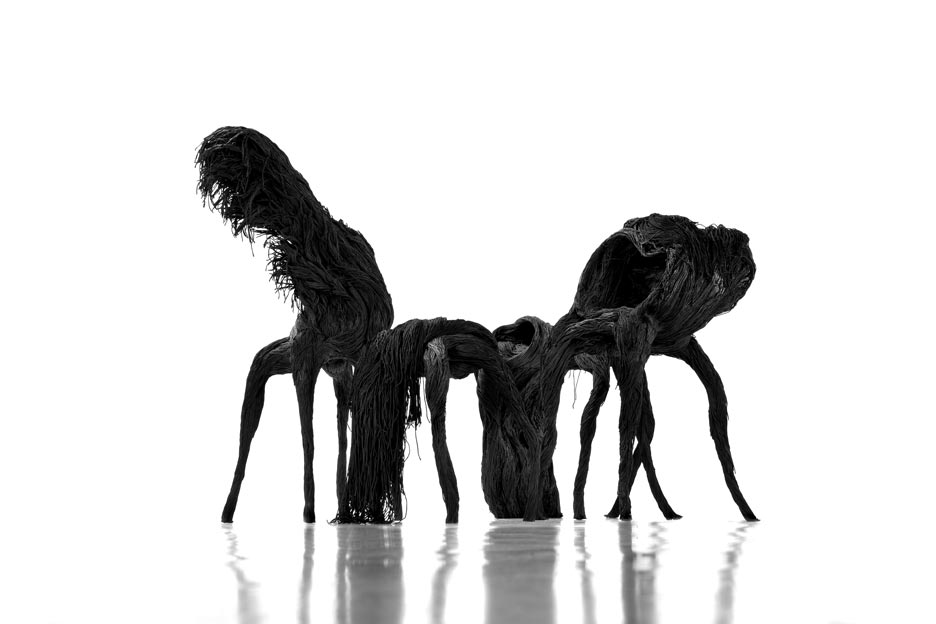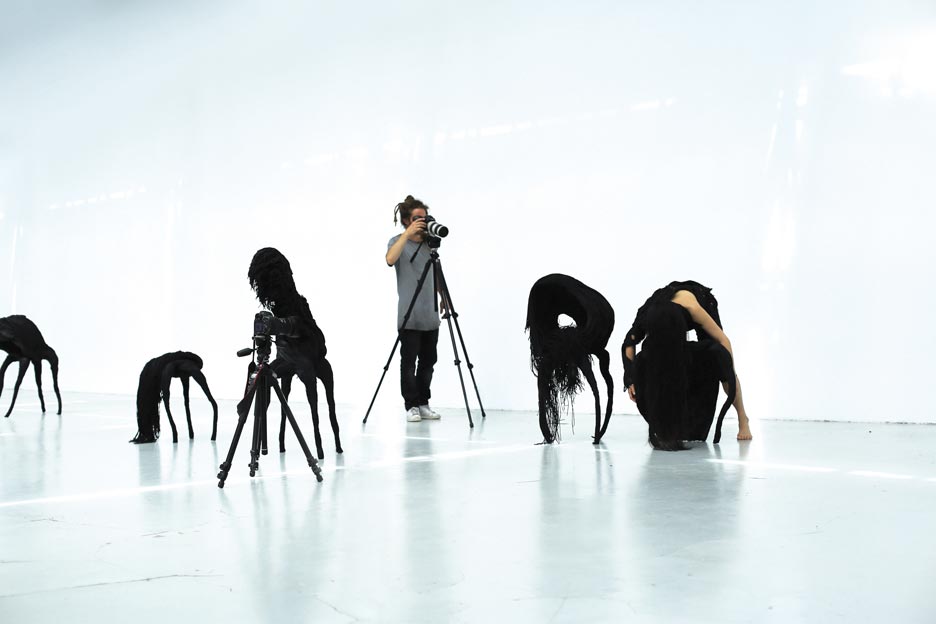DANCERS Fourth
2015
Unique
Stainless steel, cotton, latex
| CM | H: 82 | W: 62 | L: 63 |
| IN | H: 32,3 | W: 24,4 | L: 24,8 |
DANCERS Chairs Collection
The Dancers collection has received the 2015 Rado Jury Prize Paris Design Week and the first prize of the jury at the Pure Talent Contest 2016 at the IMM Cologne in Germany in January 2016.
Among others the collection has been exhibited at the Palais de Tokyo, Silencio and by Lidewij Edelkoort & Philip Fimmano in the Museum Texture and at the Carpenters Workshop Gallery in London. The Museum CNAP have acquired the three first pieces of the Dancers collection for its permanent National Design and Arts Decoratifs collection in Paris.
CAN YOU SIT ON IT?
“The dancers’ movements can be viewed as an investigation
into generic daily actions, whereas the resulting objects are a condensation of their movements. a frozen representation of the dynamic interactions can take place between people and objects. During the design process, instead of focusing on a static end result, the immaterial organization of objects is considered. The notion of an object is deconstructed by including its intangible construction – our daily rituals – into the object itself. The audience sees the traces of movements, a choreography in space, a reconstruction of the objects’ inherent movements.”
Design Manifest extract by Aurelie Hoegy | Text in collaboration with Louise Schouwenberg (Design Theorist)
“Hybrids of seating and sculpture, piece in designer Aurelie Hoegy’s Dancers collection question the functionality of design by “disturbing” its prime model: the chair. Placing form before function, the designer gives “intangible gestures” a physical presence.”
Maria Elena Oberti, FRAME Magazine
“L.E.: There’s a primal aspect to most design disciplines. This is perhaps best encapsulated in Aurelie Hoegy’s wild Dancers, which are chairs that merge animals and humans, supple fibres with hard matter, fusing object with performance. In the aftermath of the longest financial crisis in decades, a period of streamlined design for design’s sake has come to an end. Society is getting ready to break free of its materialistic past by replacing it with the materialisation of modest earth-bound and often recomposed materials. In this process, young designers formulate objects around sustainable ingredients, favouring timber, hide, pulp, fibre, earth and fire. Like contemporary cavemen, they reinvent shelter, redesign tools and manmade machines; speculating archaic rituals for a more modest lifestyle. »
Lidewij Edelkoort, Interview for TL Magazine on The graduate(s) exhibit, Carpenters Worshop Gallery, London, Text by Adrian Madlener.
- INFOS
-
Unique
Stainless steel, cotton, latexCM H: 82 W: 62 L: 63 IN H: 32,3 W: 24,4 L: 24,8 - ABOUT
-
DANCERS Chairs Collection
The Dancers collection has received the 2015 Rado Jury Prize Paris Design Week and the first prize of the jury at the Pure Talent Contest 2016 at the IMM Cologne in Germany in January 2016.
Among others the collection has been exhibited at the Palais de Tokyo, Silencio and by Lidewij Edelkoort & Philip Fimmano in the Museum Texture and at the Carpenters Workshop Gallery in London. The Museum CNAP have acquired the three first pieces of the Dancers collection for its permanent National Design and Arts Decoratifs collection in Paris.
CAN YOU SIT ON IT?
“The dancers’ movements can be viewed as an investigation
into generic daily actions, whereas the resulting objects are a condensation of their movements. a frozen representation of the dynamic interactions can take place between people and objects. During the design process, instead of focusing on a static end result, the immaterial organization of objects is considered. The notion of an object is deconstructed by including its intangible construction – our daily rituals – into the object itself. The audience sees the traces of movements, a choreography in space, a reconstruction of the objects’ inherent movements.”
Design Manifest extract by Aurelie Hoegy | Text in collaboration with Louise Schouwenberg (Design Theorist)
“Hybrids of seating and sculpture, piece in designer Aurelie Hoegy’s Dancers collection question the functionality of design by “disturbing” its prime model: the chair. Placing form before function, the designer gives “intangible gestures” a physical presence.”
Maria Elena Oberti, FRAME Magazine
“L.E.: There’s a primal aspect to most design disciplines. This is perhaps best encapsulated in Aurelie Hoegy’s wild Dancers, which are chairs that merge animals and humans, supple fibres with hard matter, fusing object with performance. In the aftermath of the longest financial crisis in decades, a period of streamlined design for design’s sake has come to an end. Society is getting ready to break free of its materialistic past by replacing it with the materialisation of modest earth-bound and often recomposed materials. In this process, young designers formulate objects around sustainable ingredients, favouring timber, hide, pulp, fibre, earth and fire. Like contemporary cavemen, they reinvent shelter, redesign tools and manmade machines; speculating archaic rituals for a more modest lifestyle. »
Lidewij Edelkoort, Interview for TL Magazine on The graduate(s) exhibit, Carpenters Worshop Gallery, London, Text by Adrian Madlener.
